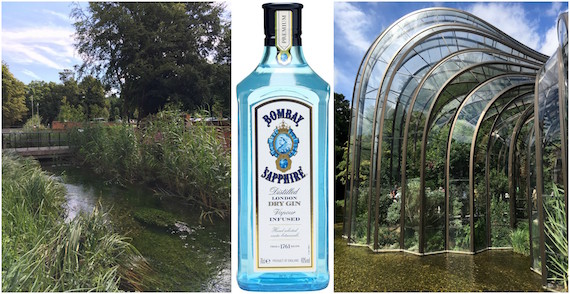The population growth of China is levelling off and Japan is beginning to see a natural drop, not to mention the move towards careers over children in developed countries. But despite this, the human race must savour the resources available and push its living standards towards the all-important s-word, sustainability.
This term goes beyond recycling and turning off the occasional light switch. Sustainability may be defined as ‘The avoidance of the depletion of natural resources in order to maintain an ecological balance’, and it’s a word appearing throughout the drinks industry. But it is important to determine whether the concept will grow or fizzle out as a fashionable word like ‘wicked’ in the 90s.
AT ONE WITH NATURE
Bacardi’s Bombay Sapphire distillery in Hampshire, England is an example of how a big brand is pushing for a more sustainable and clean living agenda. Step one towards sustainability is controlling the population, and every drop of gin inside the iconic sapphire-tinted bottles, is distilled under one roof by three men. A good start.
The distillery begun life as a paper mill, which once supplied the notes for the bank of England before it was recycled into the distillery.
It is home to one of 200 chalk rivers in the world which has been protected by conservationists to grow its trout population, and what would be more fitting for Bacardi than a natural and protected bat population on site.
BUSINESS TIME
Now onto the actual distilling of Bombay Sapphire. The distillery and visitor centre are both partly powered by a turbine inside the rare chalk river and partly by the energy gained by burning its used botanicals in a biomass burner. The facility continually distils the gin all year round so that the stills are kept at the right temperature therefore reducing energy waste. FYI gin geeks, it takes seven hours and 15 minutes to distil 10,000 litres of the stuff.
When transporting its stock to get bottled off site, tankers are filled to the max on each trip to reduce the number of trips and therefore its carbon footprint. And let’s not forget the solar panels and rainwater-reliant toilet facilities also on the premises.
The Bombay team is hoping to attract 95,000 visitors in 2017, who will in theory learn about a lot more than just gin.
THE LEADERSHIP ROLE
The issue with branding something as sustainable is the difficulty of covering every aspect. Bombay Sapphire has made an impressive effort, but it could be argued it is nearly impossible to be profitable and totally sustainable. For example, what happens to the millions of blue bottles once they’re shipped around the world is entirely reliant on the consumer, and could therefore not be recycled and pollute the earth.
“I think you have to set your own standards for sustainability,” says Julian Davies, global marketing manager at Bombay Sapphire. “We can only work with the parts of the process we control, so it’s very important to us to really execute from our side.




